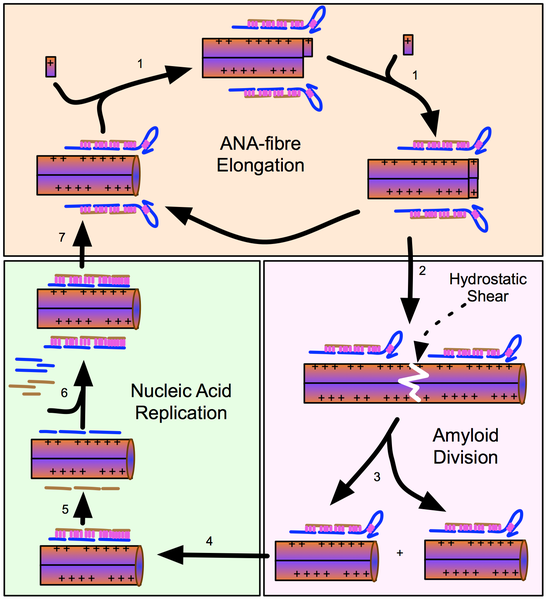Nucleic acid hybridization is akin to the delicate dance of DNA strands swirling around a ballroom, each one a partner seeking to form an intricate bond with its complement. This process, essential in the realms of molecular biology and genetics, involves the annealing of two single-stranded nucleic acid molecules, resulting in a stable double-stranded structure. The metaphor of a dance is fitting; just as dancers must find compatibility in rhythm and movement, nucleic acids find their match in sequence and conformation.
At its core, nucleic acid hybridization leverages the principle of complementary base pairing. The sequences of nucleotides—adenine (A), thymine (T), cytosine (C), and guanine (G) in DNA—provide a template for specificity. When denatured into single strands, the nucleic acids can freely explore the seas of molecular interaction, seeking out their perfect pair. The formation of these pairs—A with T, and C with G—is not random. It represents a fundamental security in genetic identity, an assurance that the building blocks of life will find their way back home.
The implications of nucleic acid hybridization extend far beyond mere molecular interaction. This phenomenon underpins a multitude of biotechnological advancements. For instance, it plays a pivotal role in the development of techniques such as polymerase chain reaction (PCR), reverse transcriptase PCR (RT-PCR), and fluorescent in situ hybridization (FISH). Each of these techniques relies on the precision and specificity that hybridization offers, enabling scientists to amplify, detect, and visualize nucleic acids with unparalleled accuracy.
One might visualize PCR as a molecular photocopier, a technology building multiple copies of a specific DNA segment. Initially, the double-stranded DNA is heated, causing it to unravel much like fabric losing its stitch. When the temperatures lower, primers—short sequences of nucleotides—are introduced. These primers hybridize to the complementary strands of the now-separated DNA, firmly anchoring themselves just as anchors secure ships to seafloors. This step, critical for specificity, allows the polymerase enzyme to extend these sequences, resulting in exponential amplification.
The nuances of hybridization metrics, for instance, melting temperature (Tm), become significant in understanding the stability of these nucleic acid interactions. Tm indicates the temperature at which half of the DNA strands are in the double-helical state, while the other half are in the separate, single-stranded form. It is an essential consideration when designing probes and primers for hybridization experiments. Just as a dance requires the right tempo to avoid slipping, hybridization demands precise conditions of temperature and ionic strength to ensure fidelity.
In the realm of diagnostics, nucleic acid hybridization stands as a sentinel against genetic maladies. Techniques such as FISH enable researchers to visualize chromosomal abnormalities and quantify genetic sequences directly within cells. The use of fluorescent probes, which bind to specific nucleic acid targets, illuminates those genetic fragments like stars in a night sky, revealing hidden patterns and paving the way for early detection of diseases, including cancer.
Moreover, as the specter of climate change looms large, nucleic acid hybridization can illuminate pathways toward resilience. Consider the role of genetic engineering in developing crops that withstand harsh climates. By hybridizing nucleic acids, scientists can insert genes that confer drought resistance or pest resilience into plants. This genetic interplay holds the promise of sustaining food security amidst fluctuating environments, highlighting the intersection of biology and ecological stewardship.
Furthermore, microbial ecology benefits from this technology through the application of hybridization techniques to monitor biodiversity and ecosystem health. For instance, using hybridization assays, researchers can identify and quantify the presence of specific microbial communities in various ecosystems, offering insight into nutrient cycling and ecological interactions. This molecular lens provides clarity to the complexities of interspecies relationships, revealing how life thrives and adjusts within its environment.
However, the spotlight on nucleic acid hybridization does not solely illuminate its strengths. There are challenges and limitations inherent to the process. Non-specific binding and false positives can skew results, necessitating well-designed controls and optimization strategies. In the case of diagnostics, the risk of misinterpretation can lead to profound consequences—both clinically and ethically. As we navigate this intricate dance of discovery, it is vital that scientists remain vigilant, refining techniques and ensuring the reliability of their findings.
In conclusion, nucleic acid hybridization can be viewed as a powerful metaphor for connection and interaction in the molecular world. Each hybridization event reflects a relationship built on specificity, stability, and purpose. It serves as a cornerstone for advancements in biotechnology, facilitating discoveries that have the potential to impact public health, agriculture, and environmental sustainability. The interplay of these sequences mirrors the delicate balance of ecosystems, underscoring our responsibility to nurture the very fabric of life that sustains us. As we harness the power of this molecular phenomenon, we inch closer to unraveling the mysteries of our biological foundation, one strand at a time.
